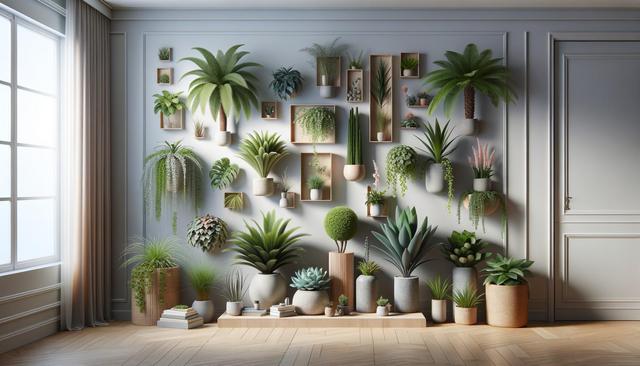
Bring Nature Indoors with Realistic Artificial Plants
Why Choose Realistic Artificial Plants?
Artificial plants have evolved significantly over the years, making them a practical and attractive alternative to living greenery. For homeowners and renters alike, realistic faux plants offer a low-maintenance way to bring the feel of nature indoors. They are crafted with attention to detail, mimicking the textures, colors, and structures of real plants without the hassles of watering, pruning, or re-potting. These plants are ideal for households that may not receive ample natural light or for individuals with busy lifestyles who find plant care burdensome.
One of the major advantages of using artificial plants is their durability. Unlike real plants, they don’t wilt, shed leaves, or attract pests. This makes them especially suitable for allergy-sensitive individuals and spaces like bathrooms, offices, and dark corners where live plants typically struggle. With a wide range of styles available, from small potted succulents to large artificial trees, it’s easy to find options that suit every room and design aesthetic.
Types of Faux Plants for Every Room
Decorating with artificial plants offers versatility across different areas of the home. Whether you’re looking to add a touch of green to your kitchen, bedroom, or even hallway, there’s a faux plant that fits perfectly. Here are a few types to consider:
- Artificial succulents: Small and stylish, perfect for desks, shelves, or window sills.
- Faux hanging plants: Add dimension and charm to ceilings or high shelves.
- Large statement trees: Ideal for living rooms or entryways to create a bold, natural ambiance.
- Tabletop arrangements: Great for dining tables, coffee tables, or bathroom counters.
Each type brings its own aesthetic appeal and can be mixed and matched to create a cohesive indoor garden look. Materials such as silk, plastic, and latex are used to enhance realism, and many are designed with UV protection for longevity, even in sunlit areas.
Styling Tips for a Natural Look
To get the most out of your realistic artificial plants, styling them thoughtfully is key. One of the most effective strategies is to place them in decorative planters or baskets that match your room’s decor. This adds authenticity and allows the plant to blend seamlessly with its surroundings. Consider incorporating natural elements like stones, moss, or wooden accents around the base of the plant to enhance its realistic appearance.
Layering artificial plants of varying heights and leaf types also contributes to a more organic feel. For example, pairing a tall faux fiddle leaf tree in one corner with a cluster of smaller potted plants nearby creates visual interest. You can also mix your faux plants with real ones if you’re comfortable maintaining a few live varieties, which helps blur the line between artificial and natural.
- Use different textures and leaf shapes to mimic variety found in nature.
- Group plants in odd numbers for a more balanced visual effect.
- Keep them dust-free by gently wiping leaves with a damp cloth.
Benefits Beyond Aesthetics
While their visual appeal is a major draw, realistic artificial plants also offer several practical benefits. They are an excellent solution for people with allergies, as they don’t produce pollen or mold. Likewise, for pet owners concerned about toxic houseplants, faux greenery removes the risk of accidental ingestion. Additionally, artificial plants are a cost-effective long-term investment since they don’t require ongoing care or replacement.
They also provide consistent beauty throughout the year. Real plants go through seasonal changes that can affect their appearance, while artificial ones maintain their pristine look regardless of climate or time of year. This makes them ideal for holiday decorating or themed displays that require a consistent aesthetic. Plus, they can be easily relocated without worrying about light exposure or watering schedules, offering flexibility in your interior design.
How to Choose High-Quality Artificial Plants
Not all faux plants are created equal, so selecting high-quality options is important if you want a realistic look. Pay attention to details like leaf texture, coloration, and stem flexibility. High-end artificial plants typically use a combination of materials to replicate the fine details of real flora. Look for hand-painted finishes, wired stems for posing, and weighted bases that provide stability.
When shopping, consider the size of the plant in relation to the space. A small plant might get lost in a large room, while an oversized tree could overwhelm a compact area. Also, take note of the pot or planter it comes with—some may benefit from being re-potted into a more stylish container. Trusted retailers or specialty decor shops often provide better quality than discount outlets, and reading customer reviews can offer insight into how realistic and durable a product truly is.
Ultimately, choosing the right artificial plant comes down to your personal style and the specific needs of your space. Take your time exploring different varieties and don’t hesitate to combine several types to create a vibrant and inviting interior.
Conclusion: Timeless Greenery for Every Home
Realistic artificial plants offer a practical and stylish way to enhance any living space. Whether you’re decorating a small apartment or a spacious home, faux greenery brings the natural world indoors without the upkeep. Their versatility, durability, and aesthetic appeal make them a smart choice for anyone looking to enrich their environment with lasting beauty. With thoughtful selection and placement, artificial plants can seamlessly complement your décor and provide a timeless touch of greenery all year round.


